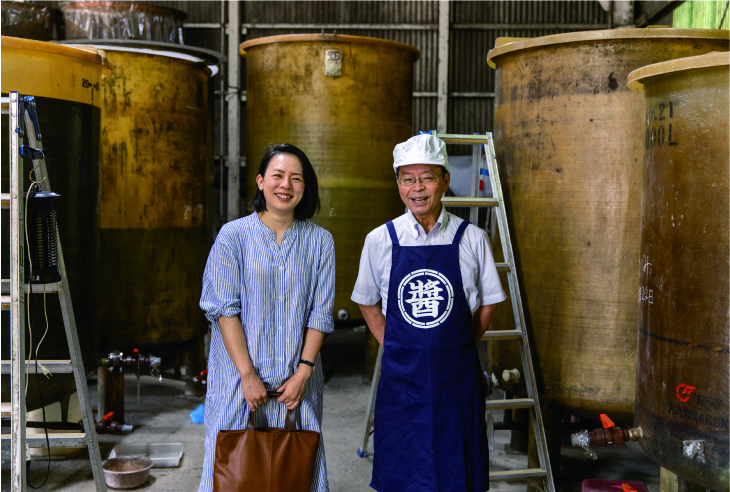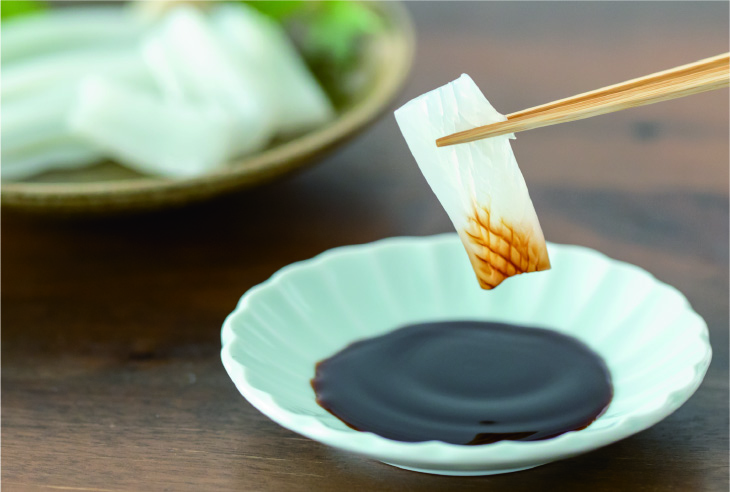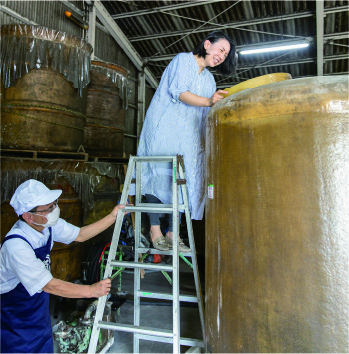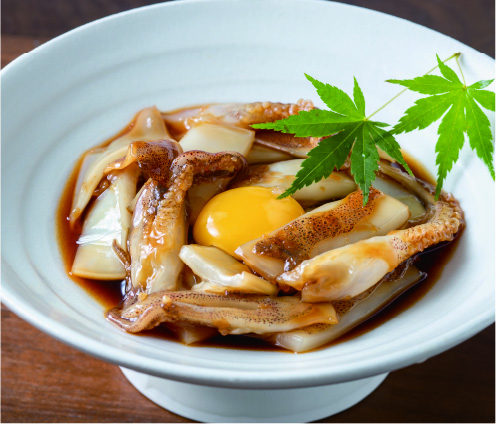Sato Shoko’s Travel Report Local Seafood and Local Shoyu Brewers
Ippon-yari Squid and Omachi Shoyu
We went on a trip to various soy sauce breweries around the prefecture with culinary expert Shoko Sato. On this day we visited Omachi Shoten in the Wakamatsu district of Kitakyushu. Sato introduces dishes using speartip squid from Ashiya (ipponyari) and soy sauce from Kyushu with its rich umami flavor.



http://oomatisoy.com/




Fresh ipponyari goes well with soy sauce from Kyushu
About 10 minutes by car from Ashiya Port, we arrive in Takenami in the Wakamatsu district of Kitakyushu. It is an agricultural area surrounded by lush green fields. No one would suspect that a sake brewery was here, but a small road between two fields leads to a signboard that reads, “Omachi Shoyu.” Coming out to greet us is the head of Omachi Shoten, Masakazu Omachi.
“My great-grandfather founded the brewery in 1897 in anticipation of the coal mining boom, not far from what is today the Wakato Bridge,” says Omachi. The walls of his office are filled with award certificates from associations that judge soy sauce, with the earliest dating back to the Taisho era (1912–1926). “Our soy sauce has always been rooted in the community. Much of our product is used by local restaurants and has been for generations,” he says. We actually found out about the brewery from a restaurant in Ashiyamachi that has been using Omachi Shoyu for 70 years—Ajidokoro Daimaru. Owner Daiki Miyazaki said, “I use what my father did—Wakamurasaki from Omachi Shoyu.”
Miyazaki continued, “Omachi Shoyu has a smooth taste with a mildly salty edge. The salt content is low, so the umami and distinctive aroma come through. That’s Kyushu soy sauce.”
Omachi gave us a tour of the brewery. It is commonly known that a soy sauce brewery will have good bacteria in the air, such as lactic bacteria and yeast. Here, the walls and ceiling are black with the positive signs of fermentation. In fact, a rich, full-bodied shoyu aroma permeates the entire brewery.
Kyushu soy sauce in general is less salty and has both sweetness and umami flavor. Subtle differences in the balance make each brewer’s products distinctive. The soy sauce goes very well with freshly caught seafood such as ipponyari squid in how the sweetness and umami mesh with the tasty flesh. But in addition to sashimi, it is well worth trying Kyushu soy sauce to make delicious marinated and simmered dishes.

Ipponyari + Omachi Shoyu Squid Marinated in Soy Sauce and Squid Simmered in Ginger Soy Sauce

Squid marinated in soy sauce
Ingredients (for two)
Swordtip squid: 1 whole
Quail egg yolk: 1
Umakuchi soy sauce: 1 cup
Grated ginger: 1 tablespoon
1. Separate the trunk and arms of the squid, remove the innards, mouth, and eyes, and rinse with water.
2. Place in a bowl with the soy sauce and ginger, and marinate for about 10 minutes.
3. Cut to bite-size pieces, serve in a bowl and decorate with the egg yolk.

Squid Simmered in Ginger Soy Sauce
Ingredients (for two)
Swordtip squid: 1 whole
Chopped scallions: to sprinkle on top
Soy sauce left over from marinating: 1/2 cup
1. Place the leftover soy sauce in a pot and simmer. Add the squid cut into bite-size pieces and lightly simmer to mix in the flavor.
2. Serve in a bowl and sprinkle on scallions.




